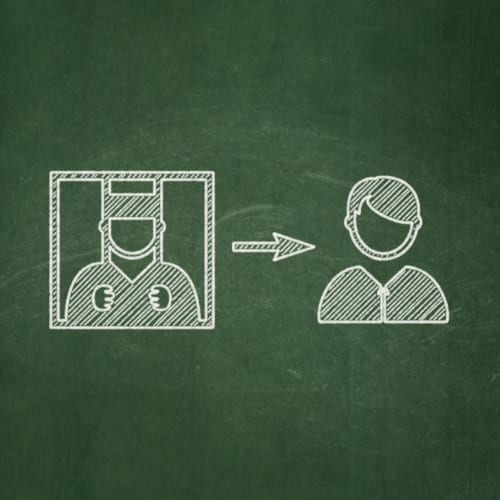Table of Contents
https://vimeo.com/207648036
Exploring inmate learning motivation with Dr. Turner Nashe
 03/27/17 | Los Angeles, CA | NPR
03/27/17 | Los Angeles, CA | NPR
College Classes In Maximum Security: ‘It Gives You Meaning’
Yuki Noguchi | NPR | Twitter
More than 650,000 prisoners are released every year in the U.S., but no federal agency tracks the unemployment rate for this population. Experts say low reading and technological literacy, as well as reluctance among employers to hire former convicts, means many drop out of the labor force altogether.
Low employment levels for that group cost between $57 billion and $65 billion annually in lost economic activity, according to a 2010 study by the Center for Economic and Policy Research.
But there are a handful of novel initiatives trying to turn that narrative around, by bringing college education and professional training, and even entrepreneurship programs behind bars. Advocates of such programs say by teaching inmates at a higher level, they reduce financial and social costs to society.
To read more visit NPR
12/07/16 | How We Get to Next
Without Technology Inside, How Can Prisoners Thrive When They Get Out?
Christine Ro | How We Get to Next
It’s a big deal that Jason Walker earned his GED at age 36. Where he studied for the test—behind bars—the teachers aren’t required to have educational credentials and not all have passed America’s high school equivalency test themselves.
After eight years in a Texas state prison, in Walker’s experience learning has been disruptive and fragmented. Along with security lockdowns and facility transfers, he says even trained teachers aren’t effective “because most get intimidated by prisoners and out of fear let them do whatever they want.”
What Walker wanted to do, though, was learn. So he persevered, first with a long waiting list to get into the classroom, then in classes interrupted by unmotivated students and months of delays due to insufficient staffing. Passing the GED, a test that was overhauled, computerized, and reissued in 2014 with a success rate of just 16 percent the previous year’s figure, meant access to college courses and vocational training.
The latest data shows that only 22 percent of Americans in prison have ever used a computer. This gap in computing basics is just one of many obstacles to reintegration into modern society upon their release.
To read more visit How We Get to Next
 06/12/16 | Toledo, OH | The Blade
06/12/16 | Toledo, OH | The Blade
Ex-inmates face obstacles when rejoining society
Roberta Gedert | The Blade | Twitter
The reaction to a mark in the felony checkbox on most job applications is, almost always, uncompromising.
Just ask Dundee Township resident Aaron Kinzel, who, despite his three degrees, did not land a job until he was out of prison for six years.
“All that time I applied at different places for employment and checked that box? Never got a call back,” said the 38-year-old man, now a criminology professor at the University of Michigan who has three degrees and is going for his PhD in public administration.
“I actually had several interviews when I didn’t check the box. I would go in and be articulate and talk about my strengths and they would say, ‘Hey, we’re interested, let’s talk further.’ And I would say, hold on, let me tell you about this,’ and of course I would never get a call back.”
The “this” refers to Kinzel’s attempted murder conviction and 10-year prison stay for an incident in 1997 when he engaged in a shootout and high-speed chase with troopers in Maine and was then the subject of a manhunt that ended in his arrest about 24 hours later. He was 18 years old.
The Public Safety Performance Project, an analysis by the Pew Center on the States, found the return-to-prison rate within three years for inmates released from 33 states in 1999 was 45.4 percent, and it was 43.3 percent for those released from 41 prisons in 2004.
To read more visit The Blade
Author
- Huffington Post – Prison Shakespeare Programs Have Dramatic Impact on Inmates
- The Atlantic – Religious Conviction and Prison Convictions: This Week’s Top 7 Education Stories
- TES News – ‘Prison education is the catalyst for changing lives’


